The fundamental problem with electric vehicles isn’t their range – nor how long it takes to recover range, although both of those are compounding problems. The most basic problem with them – that magnifies these secondary problems – is the practical difficulty of starting out with a full charge and all of the range advertised.
This is a problem because of the difficulty of getting a full charge – unless you happen to have a “fast” charger capable of doing that in your home or very close by, which you probably do not.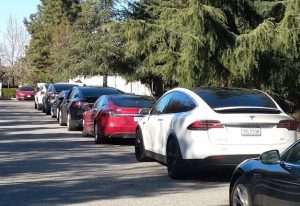
I certainly do not.
When an electric vehicle is dropped off for me to test drive, it arrives with less than a full charge. So far, much less than a full charge – because of the time it takes to instill one at the “fast” chargers located within 25-30 miles or so of my home. These are mere 50kWh hour-capable chargers, which are not capable of instilling more than a partial charge in less than an hour. That is how long it takes to recover about half the maximum range most electric vehicles advertise.
The drivers who drop the cars off don’t have the time to wait the two hours (or longer) it would take to instill a full charge in the vehicles they bring me to evaluate at the not-so-fast chargers. So they put a partial charge in – and then lose about 10 percent of that on the way to my place.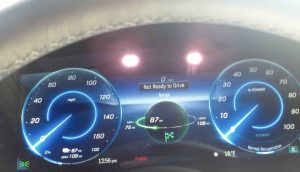
I have had three electric vehicles dropped off to test drive over the past three weeks, beginning with a 2023 F-150 Lightning, followed by a Mach e Mustang and ending, most recently, with a Mercedes EQS. Each of them arrived with around 170 miles of range indicated remaining, or about half a full charge.
That may sound ok. After all, who needs to drive more than 170 miles in one day? But it’s not the same as having the gas-tank equivalent of 170 miles of driving range in a non-electric car, which can be run down to fumes without much worry because wherever you happen to be, there is almost always gas. And there is very little waiting involved when you find it, even if you roll into the station running on fumes.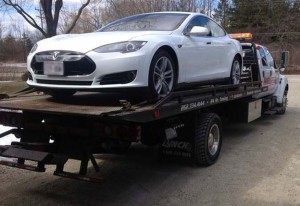
When you are driving an electric vehicle, having enough range in reserve to assure you will be able to make it farther than your planned destination is important – because you might not be able to get charge where you had planned to.
The “fast” charger you were counting on may not be charging, at all (apparently, this is not an uncommon problem) and the next available one might be farther away than the “fumes” you have left. If you cannot make it to the next one, you now have a 5,000-plus pound problem on your hands. A vehicle that will not move again unless it is hauled to a place where it can be charged. You will wait wherever you happen to be – no matter how inconvenient.
Or cold. Which might be more than merely inconvenient, if you forgot to pack a parka, gloves and long underwear.
So, 170 miles is more like 150 miles. And even that is probably optimistic. In every case, every EV I have test driven uses up more range per mile than indicated, with the disparity ranging from 10-20 percent. Thus, 150 miles of indicated range is realistically about 135 miles of actual driving range.
And what about tomorrow’s drive?
The problem can be salved by finding – and using the truly “fast” chargers – such as the Tesla “superchargers.” These can instill a couple hundred miles of range in 30 minutes or so. Assuming you can find one that doesn’t require driving 30 minutes (or longer) out of your way to find it.
If there isn’t one on your way, then you are going to find out how slow “fast” can be – even if you do eventually make it there. Because you will be waiting however long it takes to get to the “faster” charger, negating the advantage of “faster” charging.
Waiting at home is of course more convenient – assuming you have nowhere to go for awhile. Until tomorrow. Maybe even the day after that. Which is how long it will take to recover even half the advertised full-charge range on 120V household current. You can reduce that to overnight on 240V – but that’s as “fast” as it gets – at home.
This lag – the time in between charging and driving – can only be avoided by driving the EV with less than a full charge. But that means less range when you start your drive – and that will mean recharging again, sooner.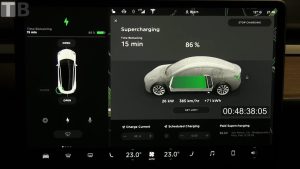
Since there is no practical way to fully – and quickly – recharge an EV at home it means depending on regular “fast” charging to even approximate the non-electric car’s capability to just be driven, anywhere, anytime. And since there is nothing even approaching the necessary infrastructure (including water-cooled high voltage cabling) or grid capacity to make “fast” charging even approximately equivalent in terms of speed and convenience to refueling non-electric cars, it means as a practical matter that most EV drivers will be regularly driving Partially Charged Cars (PCCs) that go significantly less far than advertised – and that take much longer than advertised to be able to drive any significant distance.
That is the true meaning of “plugging in.” It is more akin to leashing-on. And you won’t be holding the other end of it.
. . .
If you like what you’ve found here please consider supporting EPautos.
We depend on you to keep the wheels turning!
Our donate button is here.
If you prefer not to use PayPal, our mailing address is:
EPautos
721 Hummingbird Lane SE
Copper Hill, VA 24079
PS: Get an EPautos magnet or sticker or coaster in return for a $20 or more one-time donation or a $10 or more monthly recurring donation. (Please be sure to tell us you want a magnet or sticker or coaster – and also, provide an address, so we know where to mail the thing!)
My eBook about car buying (new and used) is also available for your favorite price – free! Click here. If that fails, email me at EPeters952@yahoo.com and I will send you a copy directly!


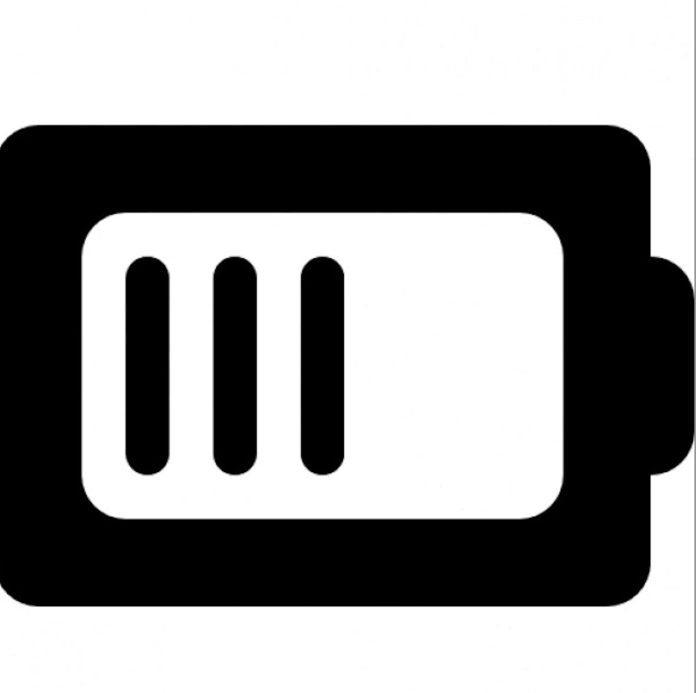









No 240VAC circuits at Eric’s house?
I plan to use the electric dryer circuit for my 240VAC EV charger.
That will recharge any mass-market (~200 miles range) overnight.
A brother and sister had to stop 6 times in 1 day to charge their rented Tesla in cold weather because the battery drained so quickly
“So beyond the lost time, it also got to the point it was between $25 and $30 to recharge. Just in one day, we stopped six times to charge at that cost,” Xaviar said…6 x $25.00….that is way more expensive then buying gas for an ice car….lol….
https://www.businessinsider.com/rented-tesla-stopped-six-times-one-day-charge-hertz-2023-01?utm_medium=social&utm_campaign=sf-bi-tipresents&utm_source=facebook.com&fbclid=IwAR3bxvgAItDFjZ7zDRNvHW_61LGzF4AGrUXMZwdaa3e1bx9kMrWDYsM5Y7M
Mark,
I think it was Tucker Carlson who said that 2022 was “The year of lies”. Will 2023 be a year where truth and reality fight back against the NUMEROUS lies we’ve been fed by the media and the government just since 2020? We shall soon find out.
Also 2020 and 2021 !
Real Clear Science scrambles to catch up with Eric’s real-time observations during the Great Christmas Freeze. But the author is totally out to lunch:
‘While a typical ICE vehicle might have its range reduced by 15% to 25% in below-freezing temperatures, an EV’s range will be slashed 20% to 50% depending upon driving speed, temperature, and interior climate preferences. Combustion reactions occur more inefficiently at colder temperatures, accounting for the range decline in ICE vehicles.’
https://www.realclearscience.com/blog/2022/12/29/how_did_evs_handle_americas_arctic_blast_872663.html
OMG, what a goofball. An IC engine runs at a temperature regulated by the coolant thermostat … typically around 180 degrees F. Ambient temperature makes little difference, except that denser cold air may actually improve mileage a bit.
After making fictitious claims about ICE vehicle winter range loss, he (accurately) describes what a headache EeeVeeees are in the winter.
But hey … this a-technical woke journo has got skin the game:
Full disclosure: The author holds various stocks related to the EeeVeeee industry.
Ah ha ha haaaaaa … broke twat! Here’s five bucks for a cup of coffee.
Morning, Jim!
I started this morning with “While a typical ICE vehicle might have its range reduced by 15% to 25% in below-freezing temperature…”
Is this guy for real?
It maybe harder to start an IC engine on a cold day but once it is running, how (and why) would its “range” decrease – and by that much? It is something I have never experienced, at any rate – and I have driven literally thousands of different cars all over the country in every conceivable condition, including -30 in Saskatoon, Canada. If anything, the colder/denser air is a boon to the engine; it is why racers used to place bags of ice on the manifold and it is why high-performance cars often have scoops to duct cooler air into the engine.
Over Christmas, my truck lost no “range” that I could tell.
I drove to Denver to pick up some supplies yesterday. On the way back I was stuck in the stop-and-go out to Idaho Springs, and again up to the Eisenhower tunnel. Then got in some freezing snow out past Vail. Because of the decreased speed I got almost 30 MPG (normally about 24 MPG on real gasoline) out of the Cherokee, but it did take an extra hour or so to get home.
Temperatures were in the low 20s F, and an EV’s battery pack would have also been cooled by the snow on the undercarriage. The BMS would have been heating the battery pack and engine compartment as well as propelling the vehicle. I have to wonder what the extra hour in the cold would have done for the range?
Whoops! Meant Passenger compartment, not engine…
turbo engined cars run better in cold weather…turbos like cold air….
Jim,
I have noticed a slight loss of gas mileage in cold weather. Probably increased time before the engine, transmission, and/or gear boxes warm up to optimal temperatures. Nothing close to 15%. Maybe 5%, maybe.
Evidently he forgot that the “I” in ICE stahnds for Internal.
I recommended that article on one of my blogs in spite of the fact that -15% to -25% is total BS for iCEs … unless you run the car into a ditch on an icy road.
I think the -50% range reduction for EVs is exaggerated too.
I’ve never seen data showing over -35%
It’s tough to find unbiased EV reviews and articles, except here.
The only other good articles I find about EVs are by people (or reporters) trying long trips in their EVs for the first time. High comedy. An EV disaster every time. We’ve all had long trips that didn’t go well for many reasons, including the weather. But those long EV trips are something else.
Our relatives in New Jersey decided to visit us in Michigan with their two young children. After the first five miles of a 600+ mile trip to Michigan, the kids demanded to know: “Are we almost there yet?” The adults were so exhausted nine hours later in Michigan that they could barely talk and fell asleep with their clothes on. The good news is one kid grew up to be a veterinarian, and the other became a very wealthy securities analyst.
I should add that trip from NJ to MI was with an ICE Honda Accord
They would have never survived that trip with two impatient kids in an EV.
ev range drops up to 50% at under -40 degrees F.
Eric,
Wondering if this article from ZeroHedge has the correct facts on ICE car ranges in the cold. I don’t recall any impacts like 15 to 25% range reduction in my experience. ( rofl )
https://www.zerohedge.com/technology/how-did-evs-handle-americas-arctic-blast
Good information is hard to find…. You are a great source! Thank you.
‘Wondering if this article from ZeroHedge has the correct facts on ICE car ranges in the cold.’ — LouisaHokie
Way back in the 19th century, ol’ Sadi Carnot pointed out that the maximum efficiency of any thermodynamic process is limited by the difference in temperature between the hot and cold reservoirs.
If combustion takes place at a constant temperature, a colder ambient temperature — whether it’s colder cooling water for a thermal power plant, or colder ambient air for an ICE vehicle — actually enables an incremental GAIN in maximum efficiency.
Halfwit journo Ross Pomeroy is unacquainted with actual science, so he just makes shit up.
Know-nothings like him made up the climate change thing, too. They should be rusticated to Mississippi cotton fields to dig irrigation ditches with their bare hands, with shotguns poking their butts and slobbering German shepherds on short leashes barking inches from their sweating, desperate faces.
RE: “ICE car ranges in the cold”
…Once again, I’m reminded of that TeeVee show, ‘Ice Road Truckers’.
…Anyway, interesting comment, Jim H.
There’s a whole lot to unpack from that.
It’s amazing to me how much knowledge gets pushed to the wayside & forgotten in the quest for Marxist political correctness B.S. by our overlords & their clueless hypnotized groupies/go-along-to-get-along useful idiots,… and a few others who should know better.
…In so very many fields of so-called, science. Among, others.
‘NYC Electric Garbage Truck Plans Hit Wall After Trucks “Conked Out” Plowing Snow After Just Four Hours’
‘Do Covid mRNA Vaccines Damage Our Ability To Control the Coronavirus After a Booster Shot?’
‘The U.S. Congress Gave Standing Ovations to a Nazi Thug’
‘FDA Criminally Approved Bioweapon as Safe & Effective Vaccine – Karen Kingston’
‘Do We Live in a Brave New World? – ‘
Etc cetera, et cetera, et cetera!
Hi Louisa,
This person’s claims regarding IC car ranges dumping 15-25 percent are not only false but ludicrous. Have you ever experienced anything like such a drop in your life, ever? Has anyone? I have not. And I have driven thousands of cars of all different kinds all over the country in the very cold and the very hot. If any of the new cars I test drove lost 15-25 percent of their “range” – i.e., their mileage declined by anything remotely that high – not only would I have noticed it but so would lawyers. There would have been lawsuits over false advertising.
It can be harder to start a gas/diesel engine in the cold – chiefly because (wait for it) the battery’s performance (its capability to crank the engine) is lower in the cold. But once the engine is running it will not become 15-25 percent less fuel efficient (the writer’s imbecile claim). If anything, an engine likes colder weather because the air is denser. And once running, it does not sap power (use gas) to run the heater.
The only scenario I can imagine in which these claims might be plausible would be in cold so extreme the engine never reaches operating temperature. But – cold as it was over Christmas – it wasn’t cold enough to do that. I drove my truck on Christmas Day – 6 degrees outside – and it went as far as it usually goes. It would probably need to be -30 or colder to keep an engine from reaching normal operating temp. That is to say, abnormal (for most of the country) extreme and highly unusual cold.
But EV range plummets in normal cold – around zero, teens, 20s and 30s. At these temps, IC engines do not suffer anything remotely like “15-25 percent” loss of range, if they lose any range at all. It’s an absurd claim postulated by an ignoramus or something worse.
There is really no way to charge a LiPo battery very quickly without damaging its life in some way, even if you had a powerful charger, and using the battery at its limits, meaning approaching 100% charge or 0% charge, damages it faster.
Charging these batteries works in two phases. Phase 1 is that the charger precisely controls voltage to keep amperage at a certain value. It raises the voltage just enough to have the battery charge at the desired amperage. This is the “fast charge” phase.
LiPo batteries have a maximum voltage, above which they are damaged, which is 4.2V/cell. However, charging to the full 4.2V will wear the battery out super fast, 100 cycles at best, so some amount of capacity is underutilized and this cutoff is something like 4.1V. The phase 2 of the charging process means the charger has reached the voltage limit, and it holds voltage there, and as the difference between charger voltage and battery voltage shrinks, the amperage drops off – this is the long tail of the charge where the rate falls off. It doesn’t matter if your charger is 300kW, if your battery only pulls 10kW in this phase, that’s what you get.
If you ever fill your battery above 80% max capacity, or so, you start to accelerate its breakdown. If you ever discharge it below 10% or so, you also accelerate its breakdown, so to maximize life, you want to keep it in the (10%-80%) range, which sacrifices about 1/3 of your usable capacity to extend its life. It’s why EV’s have a “range mode” where they charge to “full”, the idea being you do this just before a long trip to minimize the time spent at full charge. What an EV calls “full”, though, might mean the actual battery is at 90% or 95% , they sacrifice those last few % to avoid rapid breakdown.
So, even if you could charge your car to 100% at home, rapidly, you wouldn’t want to do it, lest you destroy that expensive battery in short order.
And as you say, 10% is the low range, although for my drone batteries I tend to bring them back home at around 30% (or more if I have to come back though headwind) in case there’s an abort situation, and rarely will let them get below 20%.
In the case of a small drone, this is acceptable because you can easily bring along extra batteries. In an EV you’ll need to keep reserve to make sure you can get to the next charging station, and then be prepared to wait. This will encourage poor battery management practices.
Eric, I suspect that the Mercedes EV left your house to go back on a roll-back, and NOT under it’s own power? Would be interesting to know how that debacle ended. I suspect you will be getting fewer EVs on account of this unique “No EV Fuel” issue, not more.
It gets worse. The battery has to be at a certain temperature to be able to receive a “charge”. In cold weather, the charger will (attempt to) heat the battery BEFORE any charging takes place. In many cases, the charger cannot heat up the battery fast enough, so one can sit at a charger for HOURS without one mile of charge being received.
Even the Leftists in The Bagel (h/t Taki) are being hit in the face by Reality…
https://gothamist.com/news/snow-go-for-nycs-electric-garbage-trucks-that-cant-handle-winter-weather?utm_medium=social&utm_source=twitter&utm_campaign=shared_twitter
However, Peter Butt-gig (Is Dickens scripting all this?) will order us to damn the torpedoes, full speed ahead!
The deaths in Buffalo will awaken many to the real threat of cold to humanity. Some will realize a sunny day is our friend, not our enemy. I, for one, kinda like a “warm embrace” so let’s embrace global warming.
Mark,
I’m sure that in the last week a lot of people were praying for some “global warming”, as I was, after my water AND sewer both froze. The latter a rarity. (Master plumber with 25+ years experience)
A local news source asked a question, “Do you prefer excessive cold or excessive heat”.
I replied that one might die of excessive heat in a day or two. Minutes in excessive cold. Warmer is better.
Mark,
The Biden Thing’s “Climate czar”, John Kerry, also says we need to “accelerate” the transition to “green energy” and ALL ELECTRIC transportation, despite the problems that we’ve seen with electric vehicles in certain parts of the country that experienced COLD. However, I doubt he’ll give up his private jet or multi million dollar mansion. He’s probably also all in with whatever other sinister agendas the WEF is trying to shove down the masses’ throats, such as megalopolises.
John B,
I think reality will win out. You can fantasize about all the “electrified” future but, wishing and clicking your heels just won’t make it so.
The WEF has decided China should win and bourgeois capitalists should lose. Every hydrocarbon molocule the US and Europe stops will be burned in China.
As previously discussed, those issues are a feature not a bug.
Indeed, Alex –
I’m hopeful enough people will come to understand this in time, before we run out of it.
Hard to predict Eric, but if recent history is a judge, approx. half will believe no-matter-what. Even after their EV doesn’t go or they get stuck, or some bureaucrat hits a ‘no-go’ button, they will still believe. So does this mean that this EV issue continues to divide us even more and more. Most likely. How much can they ‘force’ us? Deep rural will not be forced, they will drive tractors/UTV’s for mobility.
Thoughts of the HungerGames way of life comes to mind.
The affordability isn’t the half of it.
Teslas and I am guessing most if not all of the others have an OTA update “feature”, Over The Air, which means that Central Command can change settings, rewrite software or whatever else just like your smart phone.
With built in GPS what is stop Central Command from limiting your driving by software? It can limit the charge and limit your ability to drive as well. Today it can turn your seat heaters on and off and limit the audio speakers to 2/4/12, all by a checkbox.
Been a bad boy? Social Credit score a little low this month? Did you misgender some purple-hair on Facebook? Miss your mandatory 9.5 hours of CNN watching this week? Forget to attend the pro war rally against EastAsia? Late on your 47th booster? Well then, a few strokes of the keys, clicks of the mouse, no driving for you, no charging for you. Ok, you have to get to work? Sure, but your car will ONLY allow you to go there, don’t try the longer climate-destroying scenic route either, Google Maps will take you there and nowhere else, no stops at the burger joint along the way, (with the radio tuned to MSNBC and no way to change it or cut it off) but of your course your CBDC card won’t let you swipe for a burger anyway, instead it will make you head to Whole Foods for a delicious and nutrious WEF/Gates approved cricket loaf.
Think I am bering paranoid? I cannot even think of the half the evil shit they can.
I wil laugh as my TDI will go anywhere I like, 1000 miles on a half a barrel of used frenchfry oil if necessary.
Reply
Which makes me wonder, how do these EV makers determine the “range” of their product? Calculation or actual test? Does it sit on a trickle charge for a week or two before the test, at optimal temperature, so it actually does have a full charge? Is it mechanically tested, or road tested? Or is it tested on an engineer’s calculator? Per Eric’s experiences, it appears that no EV in use by it’s owner will EVER have a full charge, and will NEVER achieve its stated range. And will get worse as it ages. The only up side to EVs is the 0-60 time, and few drivers will use that feature, since most are afraid of ordinary acceleration.
And then there’s the complete absence of a grid capable of feeding them. As Eric experienced when he went to the shopping center “fast” charger, which was in blackout.
I’d be willing to wager that the ranges are mathematically determined by taking the theoretical maximum charge and dividing by thr motor rating.
It kind of makes you wonder if they make the whole range thing up, John? Kind of like when the Feds made up the BS, “six feet” rule with the mask bull sh** when COVID came along? Just make up a number that sounds good to consumers, even though in real-world travel time, you get nowhere near the range. But hey, by the time you figure that out (and usually, the hard way-and maybe even stranded), you have already bought the EV, and are stuck with it.
Shadow,
“(and usually, the hard way-and maybe even stranded)”
And possibly dead, if it’s 15 below with a 30 mph wind like we had the day my plumbing froze up.
A great article at American Thinker today about the leftist virtue signaling from buying an electric car. Consistently good writer Andrea Widburgh, who I have never seem write about cars, describes how virtue signaling Tesla owners are very upset about Elon Musks belief in free speech.
Leftists apparently can tolerate the high cost and inconvenience of electric cars, but can’t tolerate free speech.
I continue to believe that Elon Musk’s free speech rules at Twitter will significantly hurt Tesla sales, even more han the high price and inconvenience of electric cars.
Most EVs are second cars used for sort trips, averaging only 5,000 miles a year., versus 14,000 miles a year for the average car. When your other vehicle(s) is an ICE, the inconvenience of your EV can often be avoided.
https://www.americanthinker.com/blog/2022/12/a_onetime_journalists_tesla_rumination_is_illinformed_and_remarkably_funny.html
Another good read about EEEEVVVVs
https://amgreatness.com/2022/12/28/the-race-is-on-to-be-solyndra-on-wheels/
Is it just me…considering how stupid GM, Ford, Dodge etc have gotten…My bet it that Toyota will outlast them ALL.
It’s all about control!
Taxes are a tool to control you.
If you don’t pay taxes, you’ll die!
NSS We’re still going to make sure your life is miserable, you need to suffer.
If you don’t get vaccinated, you are gonna die! You will suffer more and will be happy.
Transportation is now a tool to control you. Don’t you dare drive, you might get in an accident and die. If you are caught driving when not allowed, you’ll be shot on sight.
You gotta go all fetal position. Give up, no use, might as well roll over and die. It’s for your own good.
Screw your freedoms!
Ahnold’s arrogance precedes his ignorance.
Replaced the blower motor in the truck, it quit just like that. The new one is now installed. You have to have heat inside your vehicle during the winter months, the windows fog up if you don’t.
You ain’t goin’ nowhere fast.
Old Man Winter says so, he’s in control.
Sorry if this is ignorant cause I know nothing about electric cars, but why don’t people just keep a gas generator in the trunk, just in case they run out of juice? Or are people already doing that?
My thoughts Dana, are that one could do this, but small generators typically have only a 110/120 plugs, which won’t be enough to keep a moving EV charged. It might help, but I’m not sure if all EVs will even drive when plugged in.
Better yet, buy a much cheaper and more convenient ICE vehicle. Paste an emblem on the back that says “ELECTRIC”. in big letters, and “RADIO”, in tiny letters. Then you can virtue signal without the high cost and inconvenience of an EV.
If a nosy neighbor asks about the exhaust pipe in the back, just tell them it is a Cabin Air Extraction Exhaust Vent, not an engine tailpipe.
Hi Dana,
You basically just described a hybrid, which makes way more sense than a pure electric vehicle. As Eric as pointed out in many articles the real reason the PTB are pushing EV’s is to control the movement of us peons.
Hi Dana,
You’d need a big (and heavy) unit powerful enough to summon the juice needed to instill any significant charge in an EV high voltage battery. It’d probably not fit in the trunk of any car I’m aware of. It might work if you were talking about a truck – the Lightning, for instance. But then why not just build the thing as a hybrid from the start?
Even with the obvious issues that have sprung up with electric vehicles during cold, The Biden Thing’s “Climate Change Czar”, John Kerry, says we need to SPEED UP the transition to “green energy”
and ALL ELECTRIC transportation…..Of course, HE’LL continue living in a multi million dollar McMansion and flying around in private jets to lecture US about how WE need to drive electric vehicles and do other INSANE things to “Fight climate change”….
http://www.foxnews.com/politics/john-kerry-says-green-energy-transition-isnt-happening-fast-enough-everything-accelerate
Basically, Eric has proven that these electric cars are not practical for those who live out in the country, especially in a northern clime. Well, that information is going to seep into our moribund culture and consumers are not going to choose them, basically there is a ceiling on those who can afford them or want them.
And there is another wild card in the EV equation, the USA may go into some kind of existential crisis, a financial crisis, a war crisis, a hegemonic dollar crisis, which changes the math on war Amerikans can afford. There is no guarantee that we are going to be operating in the same wealth level down the road as we are a fading military empire in a state of severe moral decay and rotten to the core.
In fact that creepo Klaus Slob is salivating that we will own nothing, so what does he know about our future? Poverty for all except for the 1%.
When I look at EV stock prices, what was once pumped to the moon, like Tesla (which became worth more than all of USA and Japanese car companies combined) has now cooled off to only 28 PE ratio around $120, around a hundred a share off from over 400. I think it is reasonable that Tesla market share of the EV market will shrink as the majors enter. Rivian and Nikola both have tanked to lower than the IPO price.
Well, maybe electric cars were a fad, a flash in the pan, a temporary aberation in the world car market. I think these degenerate cultural Marxist Demoncrap plans of technocratic totalitarian dream state is headed toward the reality of mightily upset population of overtaxed and over regulated tax slaves who are not keen on sending over a hundred billion to the Ukraine shithole. We are getting screwed and we know it.
According to the war pundits like Scott Ritter and Douglas Macgregor, the Ukraine war is already lost, and Russia is going to start a big winter offensive as soon as the ground freezes. So our glorious pedo sniffer Prez can then chalk up that as another fail, way worse than the Afghanistan loss and how that affects Amerika’s standing in the world is to be seen.
I think the idea that Amerika is in a death spiral and about to auger in is reasonable forecast.
Yukon,
“basically there is a ceiling on those who can afford them or want them.”
Let me rephrase that for you, “those who can afford AND want them”.
I strongly suspect that has reached market saturation. That there is very little EV market left to be filled.
Eric; thanks again for being a rare voice of sanity regarding the true limitations of EV’s and the overall EV con game.
It’s fairly easy to calculate that even a larger 250 kW “fast” charger takes ten times as long to put range into an EV as compared to a gas pump adding range to an equivalent IC engine vehicle.
So let’s say for a typical gas station/convenience store that has 16 gas pumps, multiply 16 by 10 by 250 kW – the electric load would be 40 megawatts for a single gas station…about a medium to large sized city’s worth of peak electric demand.
Even if we cut that by say 75% since a lot of people will be charging at home or at work…10 MW load is equivalent to a large industrial plant like a steel mill. Imagine that on every corner.
BTW, I would love to see you debate a guy named Wolf Richter. He is a car guy and a financial buy who blogs as WOLF STREET.
His “car guy” credentials is that he was an owner/operator of auto dealerships.
He believes that EV’s are the absolute bee’s knees. He has stated in comments on his blog what are IMO ridiculous statements about EV’s…that EV’s are no more expensive than IC engine vehicles, and that in a natural disaster like a hurricane, EV’s are a much better option as compared to IC engine vehicles.
His logic escapes me.
Wolf Richter runs a highly respected blog; I read it daily, along with Eric’s. You note ridiculous statements about EVs being made in comments on his blog and, for sure, that is true. But those are commenter’s statements, not Richter’s. He tends to get things pretty right.
ft:
The two things that I refer to were actually statements by Wolf, not by commenters. In fact, he was defending EV’s based on criticisms of the range/recharging and initial cost issues – criticisms posted by commenters.
These were both recent but it would be hard to go back and find them due to the large number of comments that he gets, but he definitely made those two points defending EV’s recently (and others in the past).
In fact in comments Wolf has consistently been quite vociferous in defending EV’s in response to any criticism of EV’s by commenters.
I have read the Wolf Richter blog for years, for the economics articles.
I think he was the general manager of a car dealership
That’s more like a salesman than a car reviewer.
He is way off the mark on EVs
Not a subject he understands
But his blog has great easy to read economics and financial charts.
I borrow (steal) the best ones for my own blogs
In fact, one of his charts is on the home page of my ECONOMIC LOGIC blog. which you can see with a computer, or using the web view with a phone, otherwise it’s invisible on a phone. That chart brilliantly compares the CPI for autos with the actual MSRP of a Ford F150 and a Toyota Camry. The difference between the CPI for vehicles and the actual prices of these two best sellers is shocking.
https://el2017.blogspot.com/